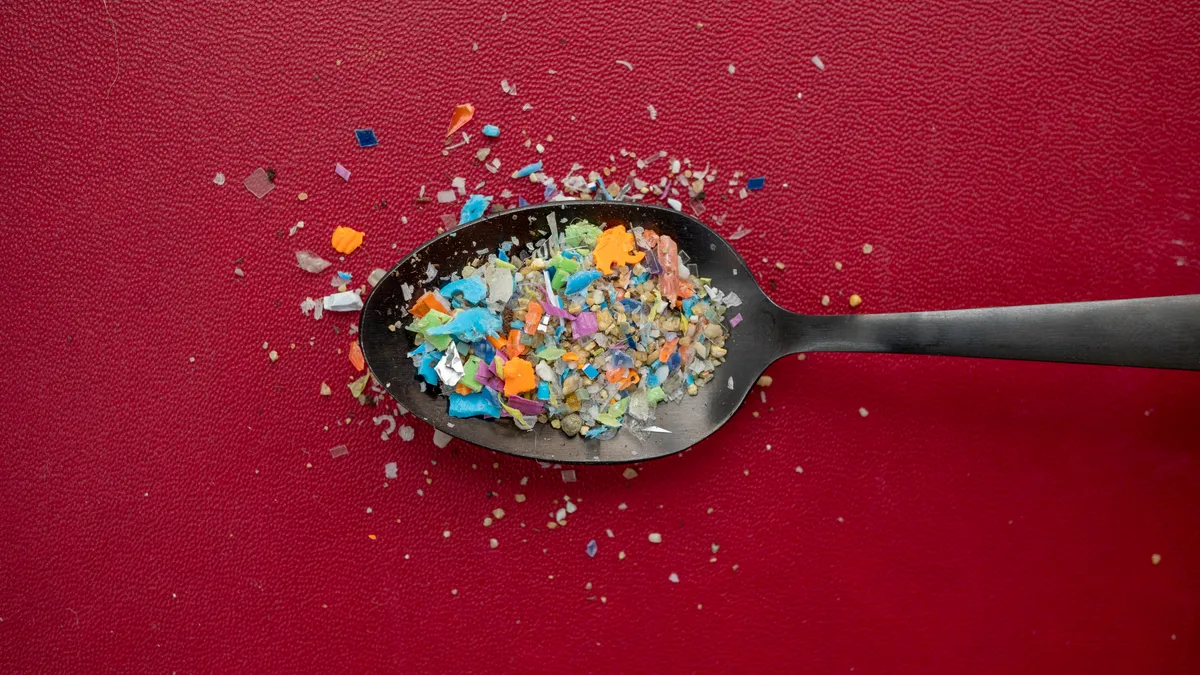Copyright CNET

Microplastics have invaded your kitchen, and plastic utensils are to blame. While plastic utensils are often more affordable than the alternatives, they could also be leaking microplastics into your food each time you use them. These tiny plastic particles are everywhere, including the air we breathe. A February 2025 study shows that microplastics actually build up in our tissues over time. This has scientists trying to figure out what this is doing to our long-term health and if it's linked to a host of serious diseases. Between food wrap, take-out containers and even some cookware, the plastics add up. The good news is you can lower your exposure with a few easy changes. Let's start by looking at where they're most likely hiding. Don't miss any of our unbiased tech content and lab-based reviews. Add CNET as a preferred Google source. Are microplastics harmful? Microplastics have become a serious problem for pollution, and now scientists worry about their potential health effects. An estimated 22 million micro and nanoplastics are inhaled by humans each year, and that is largely because they are so hard to avoid. You're exposed to microplastics in three ways: inhalation, ingestion or touch. Read more: My New Favorite Air Fryer Is Completely Nontoxic and Easy to Clean Microplastics have been shown to cause a number of issues in the human body. Microplastics and nanoplastics found in blood vessels have been linked to an increased risk of heart attack, stroke and, in severe cases, even death. Tissue inflammation, cell death and lung and liver impacts have all been noted. In animals and marine life, they can also cause oxidative and DNA damage, as well as cancer. Mice were shown to have reduced sperm count, ovarian scarring and hereditary metabolic disorders. Much is still unknown about the exact effects of microplastics but studies so far have been sobering. They've inspired many home chefs to reconsider what they use in the kitchen and put in their bodies. Where microplastics hide in your kitchen Microplastics are more common than you think. These are some places they may be hiding in your kitchen. 1. Nonstick cookware A new study found that plastic and nonstick cookware released microplastics into food during cooking, heightening one's exposure to these potentially harmful pollutants. Australian researchers estimate that Teflon-coated cookware contains thousands, maybe millions, of microplastic particles, while a simple crack or fracture in your pan could mean exposure to more than 2 million microplastic particles. 2. Plastic food containers Your Uber delivery could inadvertently be damaging your health, and it has nothing to do with what you order. With the rise of home delivery services, plastic containers are more common than ever, but these containers can easily add microplastics to your food when heated or washed. One study found that all reusable plastic takeout containers typically used by restaurants contain microplastics. 3. Plastic utensils Studies also show that plastic utensils release microplastics into your food, especially when used with hotter foods. When you ingest the food, you also ingest microplastics that settle into your body and bloodstream. 4. Tea bags It may come as a surprise, but microplastics could be hiding in your tea bags. When you brew tea, the bag is exposed to extremely high temperatures that can release its microplastics. This comes from polypropylene, a key component in the manufacturing of tea bags. Researchers at Spain's Autonomous University of Barcelona found that billions of microplastic and nanoplastic particles are released from a single tea bag for every millimeter of water it is submerged in. 5. Certain spices Depending on how it is packaged, that bottle of paprika could be full of microplastics. Many spices today use plastic packaging, which is concerning because one recent study found microplastics in all plastic containers tested. This can result in food contamination, which has increased in recent decades. 6. Plastic straws Plastic straws are especially concerning because studies show that they release microplastics and nanoplastics, which can then be directly inhaled. Unfortunately, plastic straws are extremely prevalent, with about 8 million metric tons of plastic found in waterways each year. Once these straws and other plastics are in the water, they can affect not just the water but also the soil and animals found on or in it. 7. Canned food linings BPA was a controversial material used in the manufacturing of canned food linings that could cause serious health effects. Today, non-BPA acrylic or polyester epoxies are more commonly used, but these are not proven safe either, as they too contain microplastics. Kitchen material swaps to reduce microplastics Luckily, you have alternatives. Before putting on your apron, consider adding these items to your kitchen to lower your risk of exposure to microplastics. Wooden or stainless spatulas There are alternatives to plastic spatulas. Consider trying out a wooden utensil set or one made from stainless steel. This can significantly reduce your exposure to microplastics while upgrading your used utensils. Wooden or stainless steel utensils Instead of plastic utensils, try to use stainless steel utensils that can be better for the body and also the environment. Wooden utensils can also be a great substitute, working as a more eco-friendly option for your kitchen. Glass or stainless steel food containers You can't do much about how restaurants choose to package their food, but you can avoid using them in the future. At home, try to stick to glass, ceramic and stainless steel containers to skip the microplastics. Loose tea leaves and strainers or infusers Tea bags can be filled with plastic but a safer alternative could be loose tea leaves. Many companies now offer loose tea leaves that can be used with a stainless steel strainer or infuser, which works the same as a tea bag but can be much healthier. Spices in bulk or glass containers To avoid potential contamination from your spices, switch to glass or ceramic packaging instead. This allows your spices to remain on your shelf without being infused with potentially harmful microplastics that can seep into your food. Reusable metal or bamboo straws Plastic straws take a toll on the environment and your body, causing serious issues for both. A better alternative would be metal or bamboo straws that can be washed and reused. Even paper straws are a better alternative than plastic ones. Fresh produce or frozen produce Plastic linings in canned food can hold microplastics, so to eliminate your exposure, look for foods that are packaged in glass instead. You can also choose to use fresh and frozen foods and produce that skips the packaging altogether. Cast iron, carbon steel or stainless steel cookware Plastic cookware is common in many kitchens but there are alternatives. Products like stainless steel skillets, frying pans and cast iron pans can all be great ways to upgrade your cookware without risking further exposure to microplastics. The bottom line Microplastics are lurking in our kitchens, hiding in cookware and utensils and making their way into our food. Although research continues, microplastics have been shown to cause damage to the human body, heightening concerns about the products we use and the materials used to make them.



